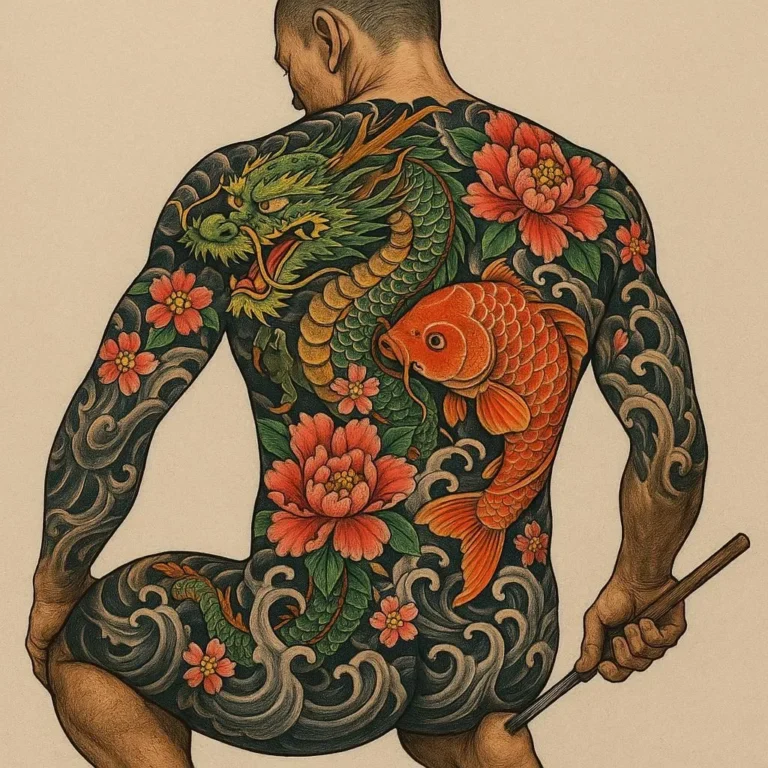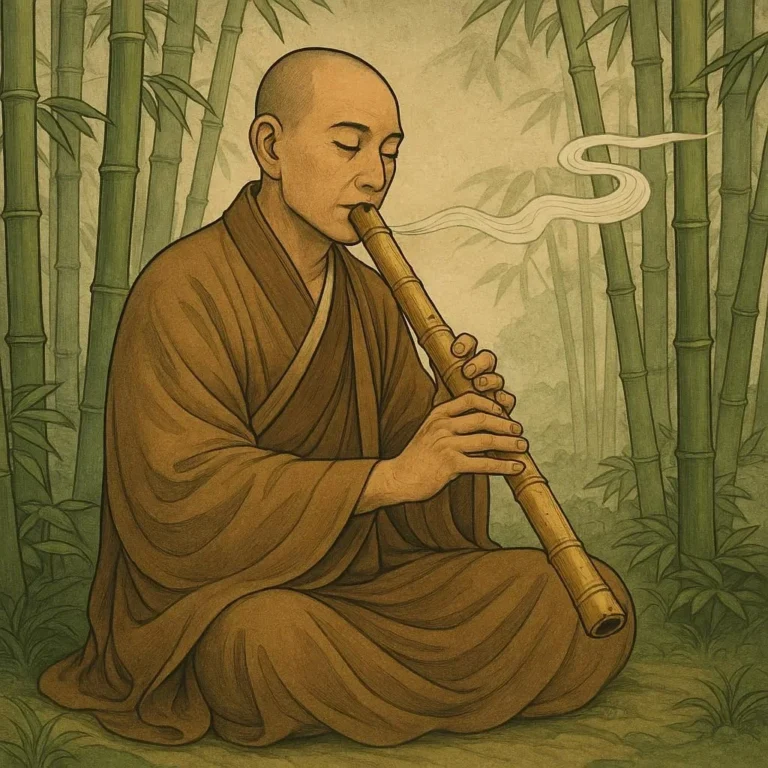509 views Samurai Art and Calligraphy: A Warrior’s Expression of Calm
It’s easy to picture a samurai sword clashing in a storm of fire and timber, but the calm that preceded and followed each duel speaks to a far deeper harmony – an artful balance between mind, body, and brush. Samurai art and Japanese calligraphy entwine in a shared philosophy that captures a warrior’s pursuit of tranquility within the chaos of battle. Whether you’re a seasoned artist, a history buff, or simply curious about the subtle brush strokes that can soften a blade’s edge, this guide will walk you through the origins, techniques, and modern resonance of samurai-inspired calligraphy.
1. The Co‑Evolution of Samurai Culture and Brush Art
The Samurai Spirit
The samurai, relatively young compared to more medieval European knights, emerged in the 12th‑century Heian period as regional governors and martial protectors. Their code, Bushidō (“the way of the warrior”), blended loyalty, courage, and an acute awareness of self‑control. According to scholars, the samurai’s aesthetic and spiritual disciplines functioned as a counterbalance to the violent demands of warfare.
Rise of Calligraphy
Calligraphy, or shodō (the way of writing), was not merely a practical skill—its practice cultivated discipline, patience, and an acute sense of rhythm. Leading monks in Kamakura and Kyoto centers translated classical Chinese texts with a Japanese twist, sustaining a vibrant exchange of ideas. Importantly, the very act of keeping the brush moving steadily across paper echoed the samurai’s sword‑draw technique: deliberate, mindful, and poised.
Thus, the samurai and the calligrapher shared a common metronome—each stroke a micro‑moment of control that, when repeated, built a compositional and moral sense of calm.
2. The Palette of Samurai Calligraphy
Materials That Mean More Than Brushes and Ink
| Element | Traditional Choice | Why It Matters |
|———|——————–|—————-|
| Brush | matsu‑ši wooden handle, silk or yew hair | The size and stiffness influence speed and ink flow. Samurai especially favored medium‑size tsuma‑tsuki brushes that allowed one‑stroke decisions.
| Ink | Sumi powder ground on a stone mortar | The swirling mixing of ink promotes a dynamic depth, mirroring the battlefield’s shifting light.
| Paper | Washi (rice paper) | Its absorbent yet strong texture enables subtle tonal variations unattainable on oleo or cotton.
| Surface | Calligraphy mats & broken‑paper additives | Textual fine‑grain ensures fluidity for each linchpin stroke.
Brush‑Motion Patterns
Samurai calligraphers utilized three canonical motions that transcended mere writing:
- Tateru (firm stroke) – the foundational linear cut, akin to measuring sword length.
- Kōseki (softening stroke) – a gentle lift after hitting the paper, mirroring a samurai’s graceful retreat.
- Yamete‑tame (stop‑and‑begin) – the pause that cements emotional awareness, echoing the stillness during an anxious march.
These patterns collectively act as the warrior’s breathing rhythm, guiding the calligrapher’s mind into a state of martial calm.
3. Symbolism: The Quiet Power of Characters
Kanji as Feng‑Shui for the Soul
While many readers can only imagine a single character, each kanji carries Shi‑(魂)—the underlying spirit. For samurai, the most common characters in scrolls were kokoro (心, heart), ichigo (一行, a single line), and ken (剣, sword). These characters were chosen not only for meaning but for their tonal balance and spatial harmony—an implicit testament that control dominates force.
Ink Saturation and Brush Pressure
The intensity of ink (darkness) illustrates the ultimate intent: a bold declaration of presence vs. a feeble attempt to vanish. Samurai practiced both extremes; the powerful sumi‑nuri (deep wash) screamed audacity, while thin wisps of sumi‑ai (ink gray) spoke of restraint.
Integrating Zen‑Buddhist Principles
The path between diligence and release is famously captured in Zen painting as “wild ink” (yōgō). Samurai embraced this concept: the sword is the brush; the battlefield is the scroll. Freeing oneself from the compulsions of anxiety—through ink that fades into the wind—reinforces the inner calm.
4. Influence on Modern Japanese Art
From Woodblock to Street Art
The ukiyo‑e woodblock prints of Edo encourage an appreciation for form in a democratic landscape. Street artists in modern Tokyo now reinterpret samurai calligraphy in neon murals, repurposing ancient brush traditions under fluorescent skies, making the warrior image ever‑present.
Calligraphy in Fashion and Design
Fashion houses wedge samurai motifs—such as the karate‑like slash of Japanese kanji—into haute couture. Designers incorporate calligraphic patterns into kimono weaves, giving garments a purposeful calm that invokes silent power.
Meditation and Current Wellness Trends
In today’s frenetic world, mindful “dot‑to‑dot” exercises derived from shodō allow anyone to practice slow movement accompanied by meditation. This demonstrates the enduring relevance of samurai calligraphy as an antidote to constant sensory overload.
5. How to Start Your Own Warrior‑Calm Journey
- Gather Your Tools – Invest in a good yew brush, sumi ink, and washi paper. They are the foundation.
- Find a Quiet Space – Silence is essential; even a 5‑minute chore in the kitchen can suffice.
- Choose a Simple Character – Start with 心 (heart) or 剣 (sword). Keep the script flowing and intentional.
- Practice Breath‑Syncing – Inhale as you begin the stroke, exhale as you finish. Feel the rhythm.
- Reflect Post‑Session – Jot short notes on your feelings – did the stroke feel static or dynamic?
- Share and Iterate – Join online forums or local classes to exchange feedback.
This beginner’s routine aims to mirror the samurai’s disciplined breathing, cultivating calm one brush stroke at a time.
6. The Lasting Legacy of Calm on the Battlefield
“The brightest swords bleed the most calmly.” – Anonymous samurai proverb
In modern times, the samurai’s calligraphic practice stands as a vivid reminder that calm is not a state of weakness but a deliberately cultivated awareness. While the aerial might of today’s military is regimented, the psychological resilience of ancient samurai was forged through ink and brush. It teaches functional humility to protect armies with intent and clarity.
Today’s artists, scholars, and even self‑help advocates echo this paradox: A calm mind exerts the most potent influence. The practice of samurai art and calligraphy compels us to acknowledge that true strength lies in equilibrium—melding vigor with stillness.
Conclusion
Samurai art and calligraphy converge on a singular command: practice, patience, and presence create calm amid chaos. Whether you’re wielding a cursive brush, wearing a robe embroidered with elegant kanji, or simply listening to your breath as you draft a line, you invite the ancient warrior’s heart into the present. So take up the brush, inhale the sumi, and write your own expression of calm—remembering that while wars may be inevitable, your own calm is always within your grasp.






